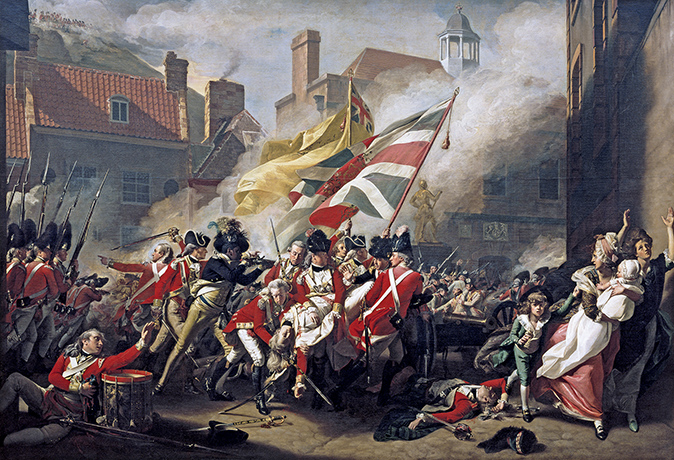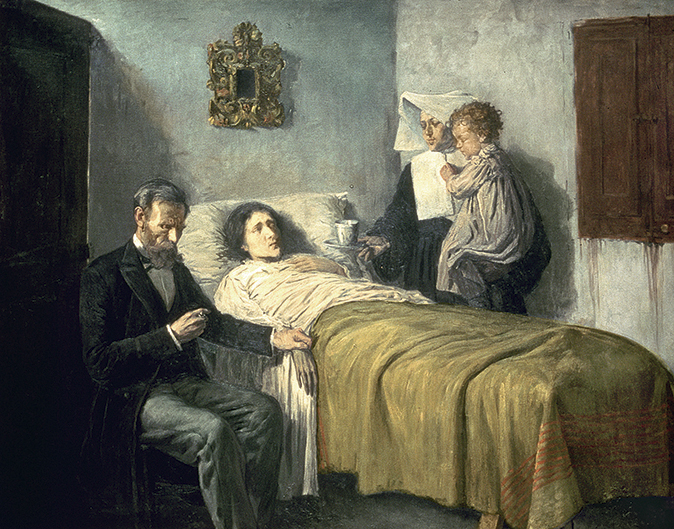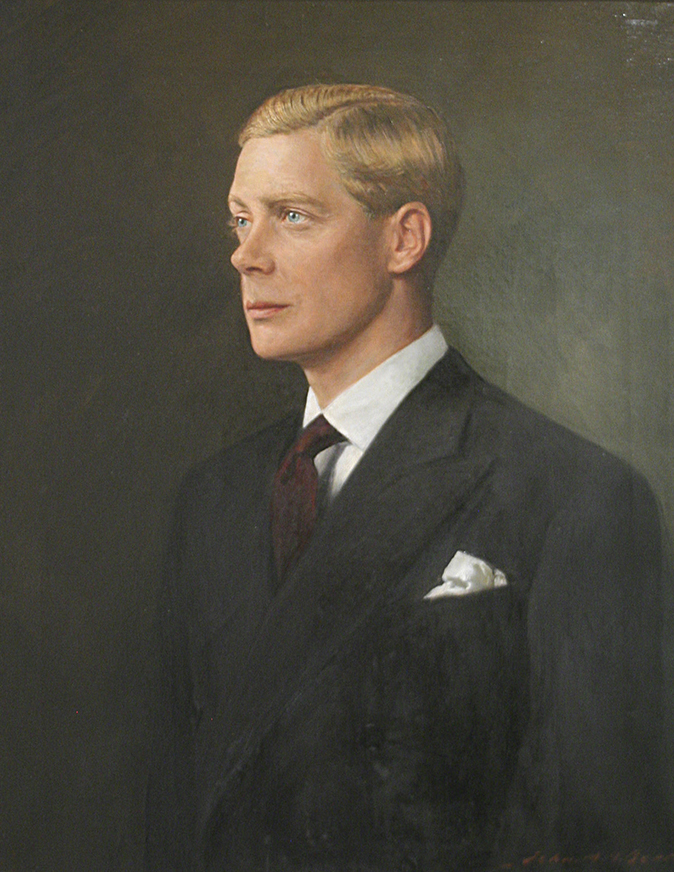My favourite painting: John Blashford-Snell
'This inspiring painting reminds me of our patriotic island and its close links with Britain.'


The Death of Major Peirson, 6 January 1781, 1783, by John Singleton Copley RA (1738–1815), 8¼ft by 12ft, Tate Britain, London
John Blashford-Snell says: As a small boy, my father took me to the Royal Square in St Helier, Jersey, and pointed out where the climax of the Battle of Jersey was fought. Apparently, one of my ancestors took part and I have his sword. For years, a sign outside the pub in the Square said “Here Peirson fell”. Ignorant visitors assumed it was a memorial to a local drunk, so the sign was replaced! This inspiring painting reminds me of our patriotic island and its close links with Britain.
Col John Blashford-Snell is an explorer and co-founder of Operation Drake and Operation Raleigh (now Raleigh International). He will be 80 on Saturday.
John McEwen comments on The Death of Major Peirson: In 1781, the French invaded Jersey and took St Helier. The British garrison and local militia, led by Maj Francis Peirson, defeated them. Copley shows the climax: Peirson dying while his black servant, Pompey, exacts revenge.
Copley—‘very thin, pale, a little pock-marked, prominent eyebrows, small eyes, which, after fatigue, seemed a day’s march in his head’—arrived alone in England aged 37 with a reputation as a portrait painter in his hometown, Boston. His ambition to be a famous history painter warranted the gamble to leave colonial America, on the verge of revolt, and follow in the footsteps of the Old Masters, whose work he had seen only in reproduction. He would study it first-hand, paint portraits for a living and bring his family to London, the way smoothed by his friend and compatriot Benjamin West RA.
A Grand Tour to Italy convinced him he could vie with the best, especially in history painting, which West had extended to include contemporary events, an innovation Copley influentially consolidated. It wasn’t simple reportage; that Copley’s artistic hero was Rubens is evident in this masterpiece, in which the fallen Peirson consciously echoes Christ’s deposition.
The picture was commissioned by an art entrepreneur. It was shown privately at Buckingham Palace to George III, who gazed approvingly for three hours, but did not buy, then exhibited at 28, Haymarket, from 8am to midnight, admission one shilling.
Sign up for the Country Life Newsletter
Exquisite houses, the beauty of Nature, and how to get the most from your life, straight to your inbox.
The principals were individual likenesses, the houses of St Helier architecturally exact. Mrs Copley and the children posed for the family. The boy, John Singleton junior, became Baron Lyndhurst, England’s first foreign-born Lord Chancellor.

My favourite painting: Clare Marx
'For me, it brings into focus the importance of physical contact in the doctor-patient relationship...'

My favourite painting: Tim Gosling
'I instantly fell in love with this portrait.'
Country Life is unlike any other magazine: the only glossy weekly on the newsstand and the only magazine that has been guest-edited by HRH The King not once, but twice. It is a celebration of modern rural life and all its diverse joys and pleasures — that was first published in Queen Victoria's Diamond Jubilee year. Our eclectic mixture of witty and informative content — from the most up-to-date property news and commentary and a coveted glimpse inside some of the UK's best houses and gardens, to gardening, the arts and interior design, written by experts in their field — still cannot be found in print or online, anywhere else.
-
 ‘It had the air of an ex-rental, and that’s putting it politely’: How an antique dealer transformed a run-down Georgian house in Chatham Dockyards
‘It had the air of an ex-rental, and that’s putting it politely’: How an antique dealer transformed a run-down Georgian house in Chatham DockyardsAn antique dealer with an eye for colour has rescued an 18th-century house from years of neglect with the help of the team at Mylands.
By Arabella Youens
-
 You're having a giraffe: Country Life Quiz of the Day, April 25, 2025
You're having a giraffe: Country Life Quiz of the Day, April 25, 2025Friday's Quiz of the Day brings your opera, marathons and a Spanish landmark.
By Toby Keel
-
 'As a child I wanted to snuggle up with the dogs and be part of it': Alexia Robinson chooses her favourite painting
'As a child I wanted to snuggle up with the dogs and be part of it': Alexia Robinson chooses her favourite paintingAlexia Robinson, founder of Love British Food, chooses an Edwin Landseer classic.
By Charlotte Mullins
-
 The Pre-Raphaelite painter who swapped 'willowy, nubile women' for stained glass — and created some of the best examples in Britain
The Pre-Raphaelite painter who swapped 'willowy, nubile women' for stained glass — and created some of the best examples in BritainThe painter Edward Burne-Jones turned from paint to glass for much of his career. James Hughes, director of the Victorian Society, chooses a glass masterpiece by Burne-Jones as his favourite 'painting'.
By Charlotte Mullins
-
 'I can’t look away. I’m captivated': The painter who takes years over each portrait, with the only guarantee being that it won't look like the subject
'I can’t look away. I’m captivated': The painter who takes years over each portrait, with the only guarantee being that it won't look like the subjectFor Country Life's My Favourite Painting slot, the writer Emily Howes chooses a work by a daring and challenging artist: Frank Auerbach.
By Toby Keel
-
 My Favourite Painting: Rob Houchen
My Favourite Painting: Rob HouchenThe actor Rob Houchen chooses a bold and challenging Egon Schiele work.
By Charlotte Mullins
-
 My Favourite Painting: Jeremy Clarkson
My Favourite Painting: Jeremy Clarkson'That's why this is my favourite painting. Because it invites you to imagine'
By Charlotte Mullins
-
 The chair of the National Gallery names his favourite from among the 2,300 masterpieces — and it will come as a bit of a shock
The chair of the National Gallery names his favourite from among the 2,300 masterpieces — and it will come as a bit of a shockAs the National Gallery turns 200, the chair of its board of trustees, John Booth, chooses his favourite painting.
By Toby Keel
-
 'A wonderful reminder of what the countryside could and should be': The 200-year-old watercolour of a world fast disappearing
'A wonderful reminder of what the countryside could and should be': The 200-year-old watercolour of a world fast disappearingChristopher Price of the Rare Breed Survival Trust on the bucolic beauty of The Magic Apple Tree by Samuel Palmer, which he nominates as his favourite painting.
By Charlotte Mullins
-
 My favourite painting: Andrew Graham-Dixon
My favourite painting: Andrew Graham-Dixon'Lesson Number One: it’s the pictures that baffle and tantalise you that stay in the mind forever .'
By Country Life